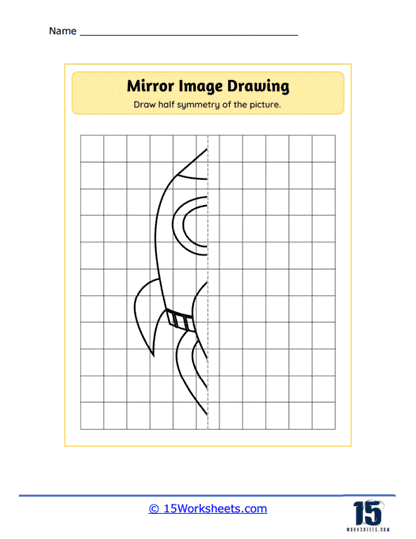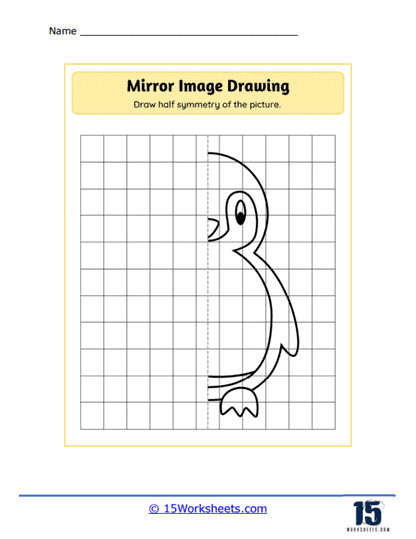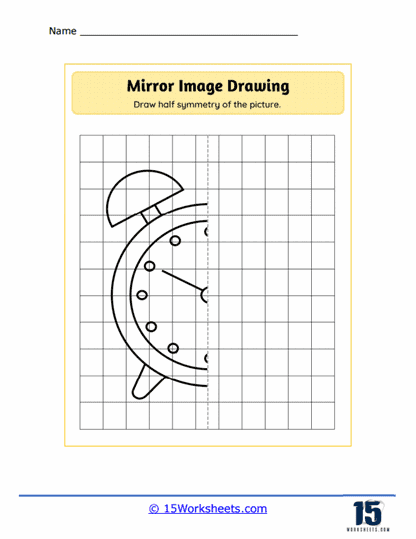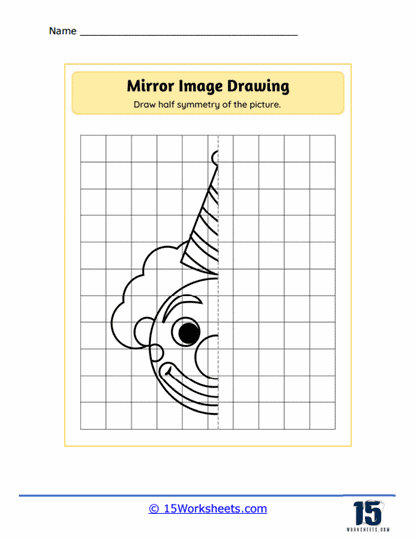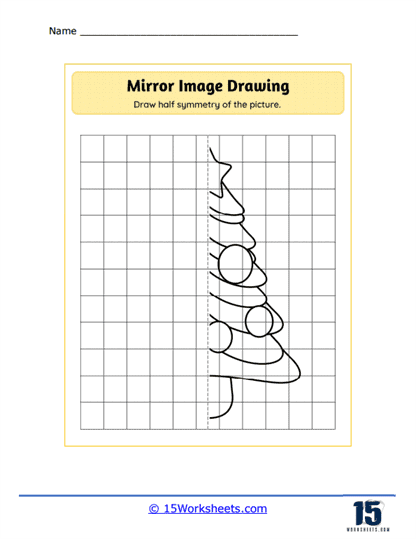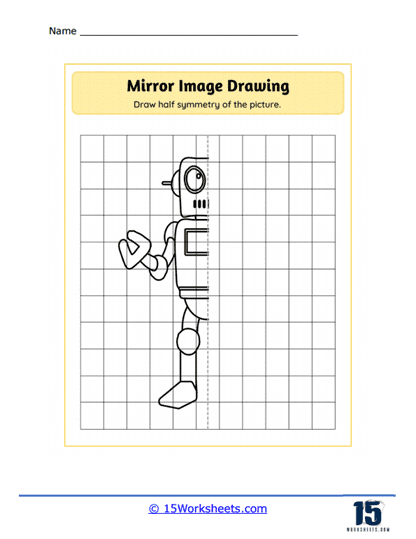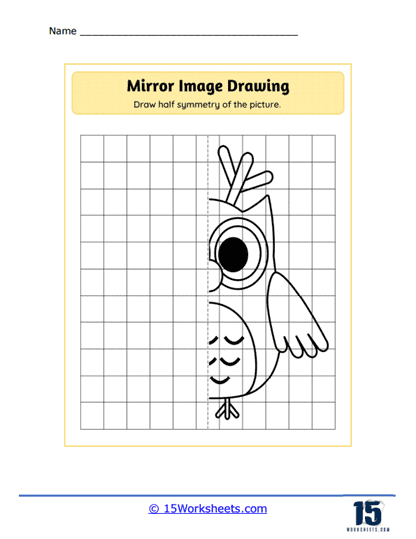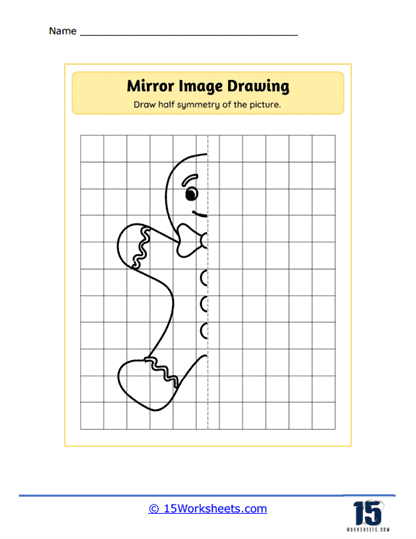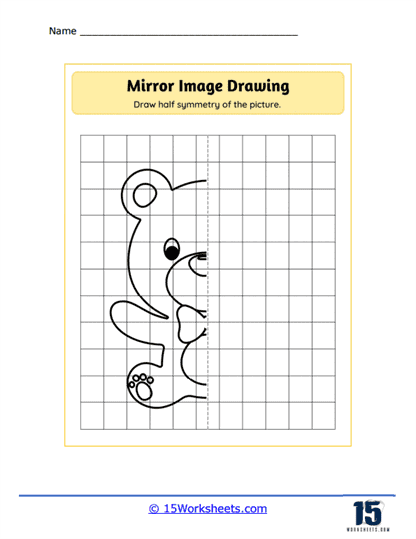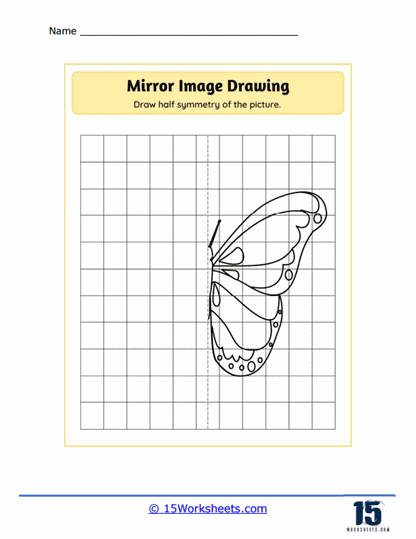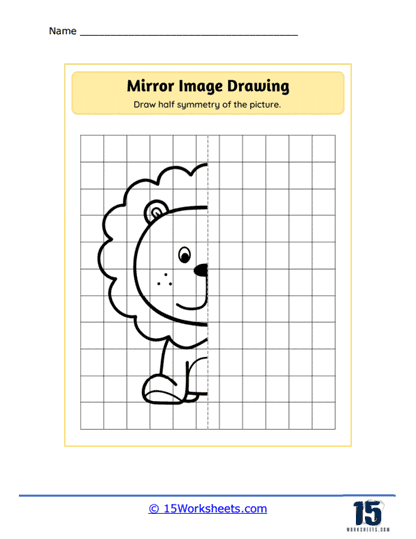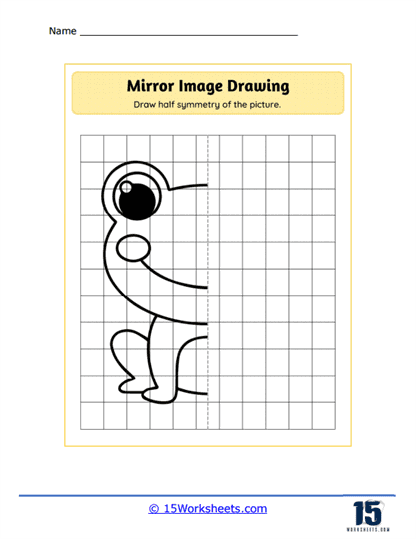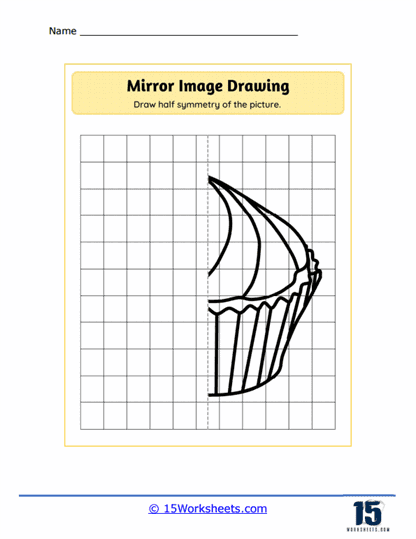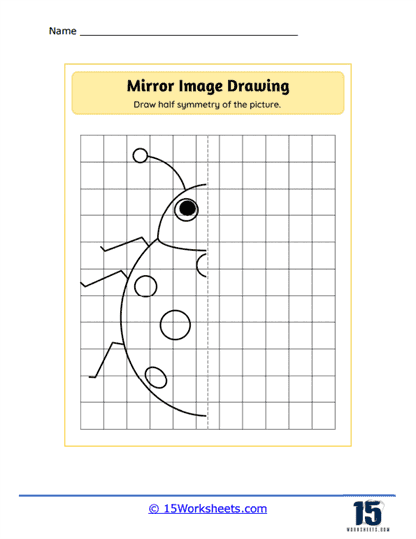Mirror Images Worksheets
About These 15 Worksheets
You know how when you look in the mirror, you see yourself, but everything is flipped? Like, if you raise your right hand, the person in the mirror seems to be raising their left hand? That’s essentially what we’re talking about with mirror images in worksheets.
Imagine a worksheet where there’s a cute picture of a cat on one side, and on the other side, there’s a space for you to draw that same picture. But there’s a twist! Instead of copying the picture exactly as it is, you have to draw it as if you’re looking at it in a mirror. So, everything that’s on the right side of the picture has to be on the left side in your drawing, and vice versa. The top and the bottom stay the same, though. This can be challenging but also a lot of fun!
These worksheets are learning tools designed to help kids, just like you, develop your observational skills, understand the concepts of symmetry and reflections, and also enhance your drawing and spatial skills. ‘Spatial skills’ just means your ability to understand and remember the locations and positions of objects, their shapes, sizes, and patterns, relative to each other.
You might wonder why this is important. Well, these skills can be super useful in everyday life and in many professions! Architects need to imagine how buildings will look from different angles. Artists need to know how to make their drawings look three-dimensional on a flat piece of paper. And if you’ve ever played a sport or a video game, you’ve used spatial skills to figure out where to pass the ball or how to avoid obstacles.
What is Half Symmetry?
Half symmetry, or reflective symmetry, refers to the property of a figure where one side is a mirror reflection of the other across a central line known as the line of symmetry. This concept is crucial in geometry as it helps students learn to recognize and create patterns, a skill that has applications beyond mathematics, including in nature, art, and architecture. It also enhances spatial reasoning, allowing students to visualize and manipulate objects in a three-dimensional space, which is essential not only for advanced geometric concepts but for practical tasks in daily life.
The concept of reflective symmetry lays the groundwork for understanding geometric transformations such as reflections, rotations, and translations, and it fosters problem-solving abilities by teaching students to analyze a situation for symmetrical properties, thereby simplifying complex problems. The study of symmetry, with its emphasis on balance and proportion, is therefore a key element in the foundation of mathematical education.
What Are Mirror Images?
Mirror images, also known as reflections, are images or objects that appear as if seen in a mirror. They are the result of flipping or reflecting an original image or object across a line, plane, or point of reflection, which acts like a mirror. In a mirror image, the overall structure and orientation of the original object are reversed or “mirrored,” creating a symmetrical counterpart.
In geometry and mathematics, mirror images are often studied in the context of reflections and symmetry. There are two primary types of symmetry involving mirror images:
Reflection symmetry (also called line symmetry or bilateral symmetry) – This type of symmetry occurs when an object or shape can be divided into two equal and congruent halves across a line of reflection (the “mirror line”), such that one half is the mirror image of the other. Examples include shapes like squares, rectangles, circles, and many natural objects, such as butterfly wings or human faces.
Point symmetry (also called rotational symmetry of order 2 or center of symmetry) – This type of symmetry occurs when an object or shape can be rotated 180 degrees around a central point (the “mirror point”) and still appear the same. In this case, the object is its own mirror image across the point of reflection. Examples include shapes like diamonds, regular polygons with an even number of sides, and certain letters of the alphabet (e.g., H, N, or Z).
Mirror images are also prevalent in various areas outside mathematics, such as physics (in the study of reflection and refraction of light), chemistry (in the study of chiral molecules, which are non-superimposable mirror images of each other), and art (in the exploration of symmetry and visual balance).
How to Draw a Mirror Image
Drawing a mirror image involves creating an identical but reversed copy of an original image or object. Here’s a step-by-step guide to drawing a mirror image:
Choose a Reference Point – Decide on the point, line, or plane where the original image will be reflected. This reference will act as the “mirror.” For simplicity, we will assume you’re using a vertical line as the reference.
Set Up Your Drawing – Draw the original image on one side of the reference line. Use a ruler or another straight edge to ensure that the reference line is straight and vertical.
Measure Distances – Using a ruler or compass, measure the distance of each key point or feature of the original image from the reference line. This will help you accurately place the corresponding points on the mirror image.
Plot Corresponding Points – For each key point on the original image, plot a corresponding point on the opposite side of the reference line, maintaining the same distance from the reference line as the original point. Ensure that the points are mirrored across the reference line.
Connect the Points – Using the plotted points as guides, draw the mirror image by connecting the points in the same order as the original image. Make sure to maintain the same angles and curves as the original image to create an accurate reflection.
Check for Symmetry – Once you’ve drawn the mirror image, compare it to the original image to ensure that they are symmetrical across the reference line. If necessary, make adjustments to improve the accuracy of the reflection.
Refine Your Drawing – If desired, add shading, color, or other details to your mirror image to match the original image. This can help enhance the visual effect of the reflection.
By following these steps, you can create a mirror image of an object or shape. The process can be adapted to different reference points, such as horizontal lines, diagonal lines, or points, depending on the desired reflection. Drawing mirror images is a valuable skill for understanding symmetry, improving spatial awareness, and creating visually balanced artwork.

